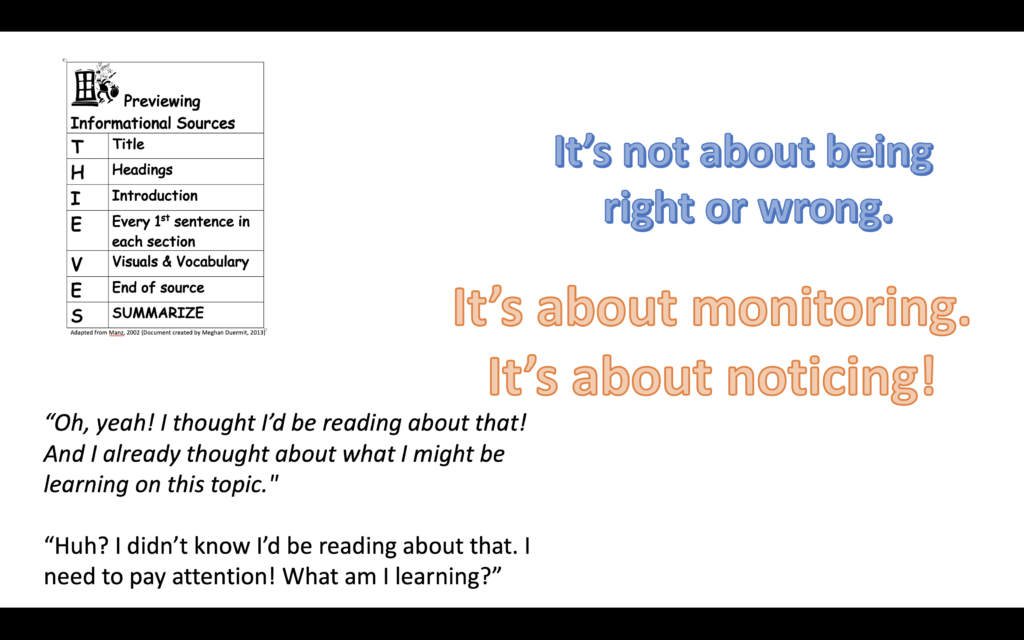
Recently I watched 60 Seesaw videos of fifth grade students reflecting on a THIEVES lesson. I’d posed these questions for reflection: “Were your predictions on track? How were they helpful (or not) to you as a reader?” What I noticed was that many students commented about whether their predictions were “right” or “wrong.” This made me wonder if they are clear about the value of predictions.
Predictions are not “right” or “wrong.” They can be informed. They can be misguided. And readers need to actively adjust predictions as they read.
Regardless, the value of predicting is not the prediction itself. The value of predicting is in how it helps a reader activate prior knowledge and then use that prior knowledge to monitor for meaning as they read.
We need to be explicit with students about why we predict. Predictions can serve as a lens for making sense of content:
- Predictions help you notice when an author has presented information you already knew.
- Predictions help you notice when new information is being presented.
- Predictions help you notice when contrasting information has been presented, information that may be wrong or that may need to be checked in additional sources.
Eliminate “Were your predictions on track?” These fifth graders’ comments are a reflection on my teaching. The question “Were your predictions on track?” seems to be asking whether a student’s predictions were “right” or “wrong.” Upon reflection, I think I needed to be more explicit about the value of predictions and provide time for students to talk about the power of their predictions in helping them make sense of content. I started the next lesson with the Powerpoint slide below. You can infer what I was trying to do.

Below is a link to the PPT slide with an additional slide on the value of predictions.
Hope this helps.
Sunday
